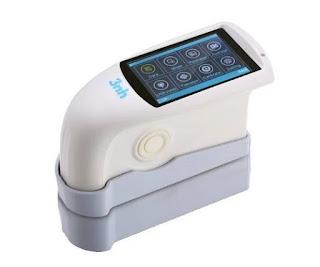Micro Tri Gloss: How Do you Use a Byk Gloss Meter?
You’ve likely seen gloss meters at paint stores and with industrial equipment sellers — angular devices with a thick needle-like probe sunk into a thick plastic block. When you press the probe against any surface, the meter gives out reading in degrees of gloss, from 0 to 90 or more. For example, if someone said that something needed 20-degree gloss to match the factory coating, they might mean 20 degrees of gloss measured by a micro tri gloss meter.
Here is something you need to know about gloss meters, though: they are often used improperly, giving the wrong results. And not knowing that can cost you thousands of dollars in unnecessary repairs.
The problem is that most gloss meters were not designed to be anything more than a simple scale for measuring total thickness on surfaces. To get the most accurate results for measuring paint, you need a special meter designed specifically to measure gloss on paint.
That’s what Byk has done with their incredible Micro Tri Gloss instrument, which gives ultra-accurate readings on paint finishes, provided it is hooked up correctly with the proper calibration block.
How Micro Tri Gloss Works
The design of the Micro Tri Gloss instrument is completely different than your standard gloss meter. Instead of having a long needle or probe attached to an analog scale, the Micro Tri Gloss has spheres inside a glass case -- one sphere for each reading. And instead of an analog scale, there is a digital display. The point here is that you cannot just touch the ball terminal on any old gloss meter and expect accurate readings. You need to know what that even means.
The first question is: how does a gloss meter measure anything at all? The answer is that it measures the amount of light reflecting off the paint. It does this by bouncing light off the surface and sending it through a prism, which breaks it up into different colors, and then into a sensor that measures the amount of light striking each sphere.
That’s where you get your integer readings from gauges like those on cars — 0 to 100 — and why one company will say their paint needs 20-degree gloss and another will say 40-percent gloss. It’s because either company has never told you what they mean when they ask for 20-degree gloss or 40-percent gloss.
Why Gloss Meters Give Wrong Readings
Here’s the problem with using an un-calibrated gloss meter on your paint. The sensor inside the sphere tells you how much light is passing through, but if you can’t detect where that light is coming from, any measurement could be off by as much as 20 percent. And if the gloss meter’s calibration wasn’t done correctly, or hasn’t been checked since it was calibrated, it could be off by even more. That means that a gloss meter reading of 15 could actually mean something closer to 25.
Buying a Byk Gloss Meter
A gloss meter is a device for measuring gloss levels of paint, varnish, or other coatings. It's important for the operator to calibrate the meter before testing, and make sure they are using the correct test mode for their area. And more importantly, it is always a good idea to buy your equipment from a trusted seller. These days, many online stores such as TestCoat are offering great discounts on branded products. So, it’s always better to check with them.
About TestCoat:
For many years, TestCoat has been a trustworthy partner and leader in the supply and distribution of inspection equipment, laboratory & physical test equipment for the coatings and paint industries. We supply non-destructive quality control and testing instruments such as Paint thickness Mil Gauges, Gloss meters, paint meter, portable rockwell hardness tester, laboratory mixersviscometers, film applicatorsdrying time recorder, cupping testers, Wet scrub abrasion testers, Coating inspection kits with advanced technology, and of the highest standards.
For more information, visit https://www.testcoat-usa.com/





Comments
Post a Comment